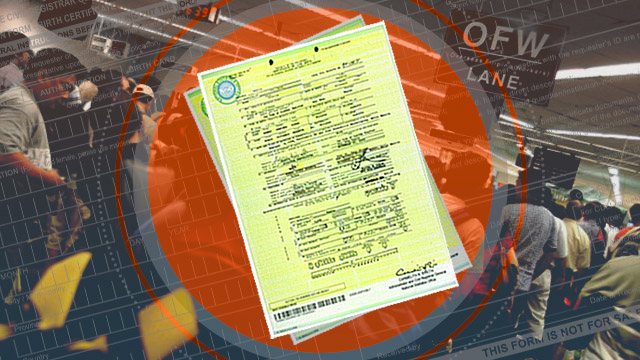
As a practicing family lawyer, I am contacted by OFWs all the time. Among the familiar requests for annulments and child support are the no less dramatic requests to help correct an OFW’s birth certificate.
Take *Amy.
She was born in the Philippines and later migrated to Australia. Now middle aged with a successful architectural practice, she wants to petition her widowed mother to live in Australia.
But she can’t – her mother’s name on her birth certificate is substantially incorrect.
Or take *Jules.
He left the Philippines 35 years ago and is trying to renew his passport so that he can visit his sick father. But he was told at the embassy that he first needed to correct his misspelled name on his birth certificate.
When birth certificates are wrong, immigration, travel and visa issues can pop up. Sometimes, deportation results.
So now we have an OFW far from home with a problem birth certificate and no easy way to correct it. What’s he to do?
Well, most OFWs go to the nearest embassy to ask the embassy to correct it. The embassies are the best option when the birth certificate is registered at that embassy.
But when the birth is registered at a Philippine city, embassies act as the middleman in a convoluted game of tag between the Department of Foreign Affairs (DFA), the Philippine Statistics Authority (PSA), and the local civil registrar (LCR) that results in double processing and a lengthy correction time.
The New York Philippine embassy best itemized the 21-step process applicable in this situation. Here's an infographic that breaks down the process:

There are a couple of things that are pretty apparent immediately:
- This is a loooong process (and I do mean more than a year/s).
- The process is repeated twice – once at the embassy and then again at the LCR.
- You’ll still need someone in the Philippines to physically go to the LCR on several occasions.
- The system is more efficient at handling birth certificate corrections filed at the LCR where the birth was first reported. A petition often stalls simply because coordination is difficult when the petitioner is abroad.
My advice?
Get a friend or a relative to file the correction at the LCR of your birth.
You’re actually going to need to do this anyway.
The embassy process above still requires someone to physically coordinate with the LCR and the PSA. Since having someone act on your behalf is needed anyway – and since it’s got so many advantages in time and money – you may as well just ask someone for help and file at the LCR. Don’t forget to provide him with a red-ribboned SPA!
Tip 1: Ask someone with your SPA to file at the local civil registrar of your birth on your behalf.

So, back to Amy and Jules.
Say they’ve managed to dragoon a family member to file at the local civil registrar. Their next biggest hurdle is the documentary requirements.
Each birth certificate correction requires a boatload of documents to prove that it is valid. However, the documents required depend on the error. Properly assessing this can be tricky. Combinations of errors and the specific situation often impact the documents required.
Since the LCR of your birth completes the initial approval of your correction, I recommend that the actual birth certificate and supporting documents be brought to them for their assessment. Supporting documents are any official document from the government or an institution showing the correct information.
If you follow the LCR’s advice, your petition has a better chance of succeeding.
In addition, ask the LCR’s advice for documents you might not be able to gather as an OFW or a Filipino abroad – they may be able to guide you or might refer you to the PSA legal department if they aren’t sure.
Tip 2: Have your birth certificate and proof assessed at the local civil registrar of your birth.

If you have a liaison already and you’ve had your documents assessed, you’ll usually submit this at the local civil registrar to start the process.
But don’t just entrust it to the system – follow up constantly. It is best to check where the document is when it has been transferred between agencies.
It is also best to work with the agency concerned to immediately address problems that might pop up.
Tip 3: Follow up!

One last reminder.
After you have your approved petition, bring it to the PSA so that they can annotate your birth certificate.
Otherwise your correction will not reflect on your PSA birth certificate, although the correction was approved.

So, what happened to Amy and Jules?
After I explained the various requirements, Amy opted to forgo the process in favor of an Australian court proceeding that used alternative proof. She found the documentary requirements and lengthy process too difficult to comply with.
As of the moment, her case is still pending.
Jules, for his part, decided to recruit a sister who lived in the Philippines to file at the local civil registry of his birth.
His correction was approved last week.
Whatever you choose to do, I hope that the above tips and advice help you fix your birth certificate in a timely manner and that immigration, travel and visa issues are avoided. – Rappler.com
*Names have been changed to protect confidentiality.
Joanne Go is the Office Manager of FCB Law Office. She has worked with clients on inheritance issues, recognition of foreign divorce cases, birth certificate concerns, corporate law, and family law. She has a diverse business background and believes it is important that people be educated about their legal options. She loves chocolate and curling up with a really good book.